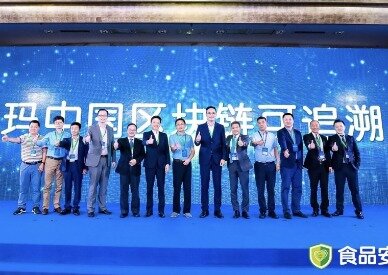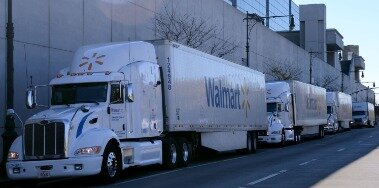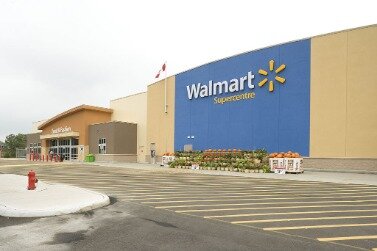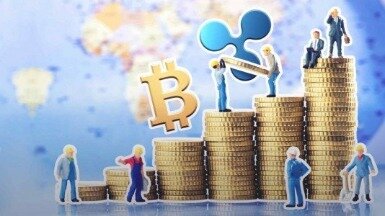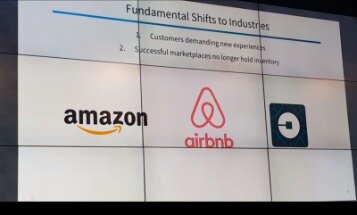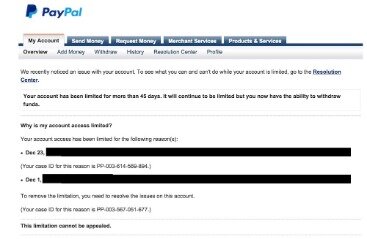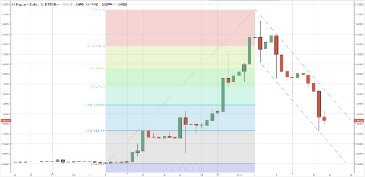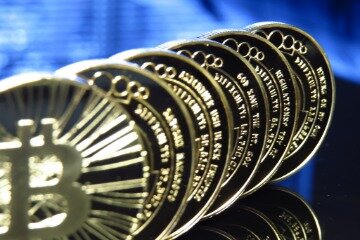Walmart Testing Blockchain Technology
Content
“Walmart believes the current one-step up and one-step back model of food traceability is outdated for the 21st Century and that by, working together, we can do better. There is no question that there is a strong public-health and business-case for enhanced food traceability,” it has told the companies that put the lettuces in its produce racks. Citing concerns about problems with the food supply chain, the world’s largest greengrocer – Walmart – says Blockchain has emerged as its preferred solution to protecting the integrity of its food supply chain. A letter was sent out to “fresh leafy greens suppliers” in the US as part of the Food Traceability Initiative. What kicked off the initiative was an E.coli outbreak across multiple states, which was eventually linked to romaine lettuces being grown in Arizona. It is hoped that blockchain traceability will make this much easier to spot, and help to reduce any litigation that comes their way as a result of illnesses. Now, Walmart plans to use blockchain to speed up identifying, researching and reacting to food safety situations.
What hand sanitizer is Walmart recalling?
Washing lettuce in water (or water combined with baking soda) may help remove pesticide residue, surface dirt and debris from produce, but Rogers cautions that washing has not been proven an effective way to remove E. coli and related bacteria. The heat kills E. coli and other types of bacteria that can make you sick.
Although more open and transparent, there are technical hurdles to be overcome. The blockchain, says Austral Fisheries and its project partners OpenSC and WWF Australia, means consumers can “be confident about what they are eating, where it came from, and how it got to them”. “It puts the spotlights on brands, both for being innovative in how we engage with our consumers, but also for stepping up our transparency efforts and leading the way for our consumers,” Dubois adds. Nestlé in April put its French brand Mousline instant mashed potato on blockchain. After what is considered the first commercial bitcoin transaction in in which a computer programmer paid 10,000 bitcoin for two Papa John’s pizzas – the reputation and value of the cryptocurrency has fluctuated wildly.
Learn how producers, suppliers, manufacturers, and retailers are creating a smarter, safer, more sustainable food system for us all. IBM Food Trust helps Farmer Connect increase trust with a verifiable record of coffee’s journey to your cup, tracing the beans from the moment they’re picked. Your potential savings from the added efficiencies you gain by joining Food Trust. Enter your business type and size for an estimate of your total annual cost savings and total cost saved by avoiding even a single food recall.
During the Gerber baby food test, Nestlé worked alongside farmers and processors of apples, sweet potatoes and pumpkins. The tests showed just how simple tracking multiple ingredients across international borders can be.
Why Blockchain?
Use of IBM Cloud offers unique protection from insider credential abuse, protection from malware and hardware encryption key protection. To ensure maximum value and access to all participants, our solution leverages standards already implemented across the food industry (i.e., GS1) and open-source technology such as Hyperledger Fabric. Interoperability on both business and technology levels enable Food Trust participants to exchange information across the food ecosystem. We work with industry leaders (e.g., GFSI) to drive industry standards for sustainability, food safety, and quality assurance. Raw Seafoods is using Food Trust to trace their catch from harvest to end-user — helping to build trust with consumers and across the entire food supply chain. By reducing waste, increasing access to information on provenance and making the food supply network generally more transparent, blockchain shows how information technology can be used to benefit producers, retailers and consumers.
Most supply chains rely heavily on manual processes, making it difficult and time-consuming to trace back an issue, such as the E.coli romaine lettuce problem from last spring, responsible for at least 200 getting sick. Each year worldwide, unsafe food causes 600 million cases of foodborne diseases. Being able to trace the origin of food could not only allow companies to act quicker when a contaminated food source is identified but could ultimately help save lives. It works on the principle of a distributed, secure ledger which would make it virtually impossible to tamper with the data, once it’s written within the blockchain. A blockchain system stored on a drone would encrypt and store operational parameters.
Walmart To Use Blockchain To Ensure Food Safety
A focus group for Sainsbury’s and Unilever’s Trado pilot said the tea’s blockchain-enabled perks for smallholders sparked a preference for the product, but only after “price, quality, brand loyalty and taste”. “They still hold a lot of promise as a potential future for how we trust things peer to peer around the web, but more work is still to be done,” she says. The likes of Provenance, OpenSC and VeChain run on public blockchains, which are accessible to anyone.
Due to the difficult nature of changing or reversing the information which is recorded, it enables a high level of trust between trading partners. The database can record significantly more data than that which can be recorded by existing databases. This includes a list of transactions which detail how products have flowed through the end-to-end supply chain, including sourcing information, factory details and date coding information, providing a high level of transparency and traceability. The collaboration of Walmart, IBM and Tsinghua University takes advantage of the distinctive strengths of each member of the team. Scientists from IBM Research – China are among the leading edge technologists at IBM now in the forefront of the rapid evolution of blockchain. So in the wake of the outbreak, Walmart – one of the worst-hit retailers – took decisive action.
Food safety, on the other hand, was “full of people, messy processes, waste and products going off”, he said. Blockchain provides the foundation for a new generation of transactions that establishes trust and transparency, while streamlining business processes. Across the ecosystem of food producers, suppliers, retailers and more, Food Trust is working with industry leaders to make blockchain innovation uniquely valuable and efficient across many segments of the food industry. Food Trust is the only network of its kind to connect participants across the food supply through a permissioned, permanent and shared record of food system data.
Blockchain & Bellucci
Multiple users hold and maintain the ledger, and all transactions added to it are broadcast to all users and verified by consensus. Walmart has tapped blockchain technology to track its Indian-sourced shrimp to select Sam’s Club stores in the US. The first proof of concept IMB and Walmart worked together on was tracking a pork supply chain in China. “ it’s been cut, it’s been processed, it’s been despatched, it was at this temperature – all of those process steps were just uplifted to the blockchain and put onto a dashboard so anyone could see them,” he said. Food safety was one of the first blockchain applications Leng worked on, despite the challenges.
“We note that products with the blockchain are experiencing an increase in sales but it’s hard for us to tell if it’s only thanks to the blockchain – it may be only one of the factors,” Delerm says. Some of the fundamental issues with scaling public blockchains have still not been solved,” says Provenance CEO and founder Jessi Baker. While Walmart’s might has allowed it to enforce new protocols on leafy greens suppliers (they were “required to conform” by January), for others diplomacy is needed.
They worked with the standards authority in barcodes and labelling to define the data attributes for upload to the Blockchain. Suppliers used new labels and uploaded their data through a web-based interface. Enterprises get overwhelmed by vast amounts of information coming from suppliers and customers in varying locations, from pricing to labor agreements to tax documents and more. There are simply not enough hours or people to complete carry out the processes quickly and error-free.
Who Owns The Data?
Basically, blockchain allows everyone to keep an eye on what’s going on within a system, without giving any single person control over the information. On the back of the Web, Cloud Computing, Mobile and the Internet of Things, Blockchain is the fifth wave of innovation since the birth of the internet. A blockchain is essentially a distributed database of records or public ledger of all transactions or digital events that have been executed and shared among participating parties. The company has been piloting the technology on IBM’s Food Trust blockchain for 18 months, according to US press reports – deploying it to track everything from mangoes to chicken.
- A blockchain is essentially a distributed database of records or public ledger of all transactions or digital events that have been executed and shared among participating parties.
- Blockchain’s suitability for certification – easily allowing verification conditions to be set regarding ingredients, preparation and even working conditions – make it a vital resource in the fight against food fraud.
- It is hoped that blockchain traceability will make this much easier to spot, and help to reduce any litigation that comes their way as a result of illnesses.
- They worked with the standards authority in barcodes and labelling to define the data attributes for upload to the Blockchain.
- IBM Food Trust™, built on blockchain, benefits all network participants with a safer, smarter, and more sustainable food ecosystem.
- IBM Food Trust helps Farmer Connect increase trust with a verifiable record of coffee’s journey to your cup, tracing the beans from the moment they’re picked.
Walmart has sent a letter urging its suppliers of fresh leafy greens asking them to trace their products to the farm using blockchain technology. The test in China coincides with Walmart’s recent launch of the Walmart Food Safety Collaboration Centre in the country.
Before Yiannas set the challenge to his staff, he had worked with Stephen Leng, supply chain solutions portfolio and blockchain leader at IBM, to create a blockchain system to shadow Walmart’s traditional monitoring processes. The mangoes had also been tracked by blockchain as part of a pilot scheme, and by looking on the blockchain the point of origin took just 2.2 seconds to find. All food ecosystem participants can join Food Trust, via tiered modules available to buy in Marketplace. You can connect to your partners and define what information is shared when you define your transactions. Food Trust provides users and stakeholders with real-time, instant access to business-critical information from which everyone benefits. Data is owned by the registered company or organization that owns the data prior to it being uploaded to Food Trust. Users can set permissions that govern what data can be seen and by whom – determined solely by the owner of the data.
The blockchain contains a certain and verifiable record of every single transaction ever made. Behind the scenes, consumer goods retailers have been working with a new technology, blockchain, and its impact is now starting to bear fruit.
More than 50 years of globalisation in food production has created a food supply chain that is more distributed, more international and more complex than at any point in history. Once the hardware is in place, blockchain technology will have the potential to become the new engine of growth in a digital economy where the internet is increasingly used to better conduct trade and improve consumer experience. As it stands, Walmart requires all suppliers of leafy green vegetables to make their data blockchain-friendly by 2019 – including suppliers for Sam’s Club, the Walmart-owned membership-only retail company. With a keen eye on the future, Walmart has also filed a patent that will utilise blockchain to track the contents of a package, its location, environmental conditions and other variables.
Does Starbucks use LIFO or FIFO?
Starbucks is a highly recognized, global brand that built an empire around selling coffee. (In fact, their Pumpkin Spice Lattes have transformed how many experience Autumn and pumpkin farming in general.)
It is used to buy drugs on the dark net and the space is swarming with scammers. In late 2008, a paper published on an obscure online forum described the workings of a peer-to-peer electronic cash system called bitcoin. The document, written by a still-unidentified author under the pseudonym Satoshi Nakamoto, described a way to send units of the cryptocurrency from user to user without the need of a bank’s oversight.
These networks typically require resource-intensive computations to help prevent fraudulent transactions. The team at Walmart co-led the core design and setup of the application with IBM as well as built the integration with the enterprise systems.
For example, when Austral Fisheries catch a Patagonian toothfish in the Southern Ocean, the crew attach an RFID tag to its flesh containing the GPS co-ordinates and time of the catch, as well as a unique identification number. There is also a slew of small and specialist brands using blockchain to prove their ethical and environmental credentials, and the provenance of their products. Director of Sainsbury’s brand Judith Batchelar said blockchain had “real potential” for companies like Sainsbury’s with “global, complex and fragmented value chains where absolute transparency has been traditionally difficult to achieve”. “As grocers are being held to higher standards of visibility and traceability they will lead the way with the development of blockchain,” says Gartner senior research director Joanne Joliet.
Walmart China appears to be hoping that increasing the ability of consumers to check whether their higher demands on food safety are being met through digitalisation of food traceability will increase their brand value and win consumers’ trust. There are number of participants including Kroger, Wegmans, Doll Foods, Driskel, Nestlé and Unilever, among others, and Leng predicts eventually suppliers will be told they need to be on a blockchain. Walmart is testing blockchain, an advanced database technology, to improve the traceability of fresh produce in the US and pork products in China. The solution provides authorized users with immediate access to actionable food supply chain data, from farm to store and ultimately the consumer. The complete history and current location of any individual food item, as well as accompanying information such as certifications, test data and temperature data, are readily available in seconds once uploaded onto the blockchain. Walmart wants its suppliers to use blockchain technology, to make it easier to track the origin of vegetables. That would make tracking any potential health hazards a much faster, simpler task.
It provides a permanent record of transactions which are then are grouped in blocks that cannot be altered. It could serve as an alternative to traditional paper tracking and manual inspection systems, which can leave supply chains vulnerable to inaccuracies. IBM solved this through a prototype mobile app that supply chain participants can use to enter data onto the Food Trust system. Developers from several Food Trust members are also building interfaces tailored to their own data and infrastructure needs. Across the retail and consumer sectors, blockchain could become a standard tool for solving strategic challenges.
Provenance, a UK-based fintech firm, announced a pilot project last year at the UN’s One Planet Summit to support more than 10,000 Malawian tea farmers. The project will ensure producers secure proper trading conditions and are properly compensated for their work. Blockchain technology enables Walmart, its suppliers and producers to accurately and securely share and record information with each other through a digital ledger.
Normally, banks keep a master ledger to serve as the truth on who holds what money at any time. Bitcoin uses a publicly distributed ledger – which Nakamoto named the blockchain.
Major retailers including Carrefour, Sainsbury’s, Co-op, Alibaba, Auchan and Kroger and suppliers such as Dole, Driscoll’s, Nestlé, Princes, Tyson Foods and Unilever have all run blockchain trials and initiatives in the past 18 months. In the future, the Walmart China Traceability Platform shall adopt multilateral cooperation, synchronizing data from local governments’ traceability platforms and suppliers’ own platforms. Clients are now able to trace from store back to the farm in 2.2 seconds, where data is available. Additional business value and savings depend on company size, brand values and number and category of products implemented. Estimate the potential value you may have from the solution implementation by using the Food Trust Value Assessment Tool, which was built based on average savings that current participants are seeing. The software-as-a-service solution is working to ensure that trust enables, rather than hinders, the expanding food system.

